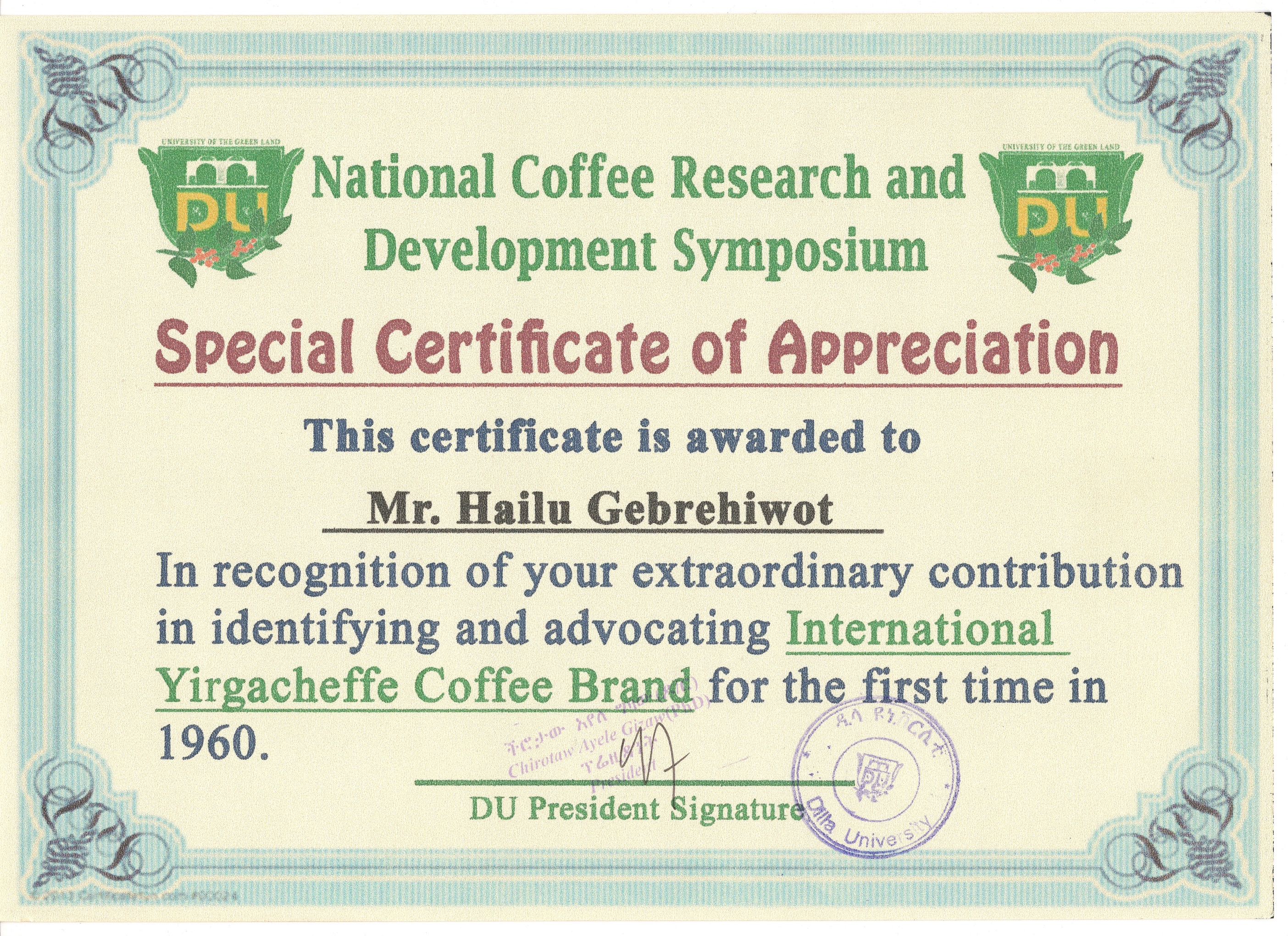The Discovery of Yirgacheffe Coffee
Upon his return to Ethiopia in 1960 with an MA degree in Economics, from the University of California, Berkeley, Hailu Gebre Hiwot, the founder of Haicof Plc., joined A. Besse & Co, the largest private trading company that was the pioneer of washed coffee production in Ethiopia. Hailu obtained training in the production of washed coffee from a German coffee expert and was assigned to the Sidamo Province, a major coffee growing region, 350 km south of Addis Ababa. A. Besse & Co had established 8 coffee pulping/washing stations dotted along the main highway from Yirgalem town in the North for some 150 kms south to Yirgacheffee. There was only one other coffee washing station in Yirgacheffe owned by a French firm called Cafex. These 9 stations were the only ones established in the 2nd half of the 1950s. Hailu’s job was to supervise and control the quality of the washed coffee production in the Province.
The quality control was rigorous, only fresh red ripe cherries were pulped, fermented and dried meticulously. The coffee thus produced was bulked according to size and color of beans. Buyers in Europe found the Sidamo coffee quality attractive with balanced acidity and body. The coffee had been sold by description only and no samples were required as it’s now common.
It was at this juncture that history was made. The coffee that was produced in the 8th washing station proved to be conspicuously different from coffees that came from the other 7 stations in the Province. It was like a “EUREKA moment” for Hailu who was meticulously documenting production. A distinguished type of coffee was “born”, with greenish/bluish color, bigger and more uniform sized beans that looked attractive. Hailu, therefore, made what later proved to be a history making decision, not to bulk this coffee with the others. The excitement prompted him to look around the 8th washing station to discern what possible factors accounted for the unique visual characteristics of the coffee. The coffee cherries came from the lush and heavily shaded coffee farms on the slopes of the leeward side of the range of mountains called Koke that runs north – south to the east of the station. This station used the water of the river called Melkalole that cascades east-west. At an altitude of 1700 to 1800 meters nature must have endowed Yirgacheffee more than any other place in the coffee growing regions, the optimum quality soil, climate, and rainfall to make the coffee so unique and attractive.
Hailu hastened to verify and establish his findings by sending to England and Germany for cup testing, two separate samples: one from the 8th station called Melkalole named after the stream whose crystal clear water was used for pulping the red coffee cherries and the second sample representing Sidamo coffee from the seven washing stations. At the time Ethiopia did not have cupping facilities or trained cuppers.
The verdict: to Hailu’s great elation both buyers sent identical comments: namely, “keep Melkalole (later Yirgacheffe) coffee separate from Sidamo coffee and produce as much of it as you can. We’ll pay premium price for it.” The green gold mine was thus discovered. The rest is history. The superior quality and premium price of Melkalole coffee was established, which was later branded as Yirgacheffe. The Government in the subsequent years, designated some 19,500 hectares of coffee growing areas in and around the small town of Yirgacheffee as the home of Yirgacheffee coffee. The washing station of Melkalole, closed down since, was located at the south eastern corner of Yirgacheffee town.
Initially the total annual production was obviously very small. Now the quantity produced is vacillating around 3,000 tons annually and is fetching much higher price over the normal washed Sidamo. Dedicating his life to the growth of Ethiopian coffee export, Hailu Gebre Hiwot is affectionately called “Aba Bunna” or “Father of Coffee”.
It is a well-established fact that high quality of coffee is determined by two main factors: the innate genetic quality and the environment. Nature has generously endowed Ethiopia with both factors making it the first exclusive source of Arabica coffee. The name Arabica, derived from Arabia from where the coffee was first exported is a misnomer. The coffee should have been called Abysinica or Ethiopica to reflect the actual origin.
To underscore this fact, Dr. Peter Baker writes: “One thing is certain though, Ethiopia is the ultimate source of the vast majority of quality coffee genes and the distinctive quality of many Ethiopian coffees affirms that there could well be many new varietals there of great potential.” No other country can boast the varied cup profile of Ethiopian coffees, from the fillers to the exotic. This vast plate of variety will be the perfect module for branding/promoting. Roasters/consumers that opt for balanced body & acidity will go for the washed Sidamo; you want fruity coffee we have natural Lekempti/Gimbi coffee, you fancy mocha flavor we have Harar which is all dry processed, you prefer winy and spicy cupping flavor get washed Limu, how about intense flora, fine acidity and rich body, surely you have washed Yirgacheffee, etc. That’s why knowledgeable observers refer to Ethiopian coffee as a marketer’s dream.

Special Certificate of Recognition given to Hailu Gebre Hiwot for his discovery of Yirgacheffe Coffee by Dilla University
